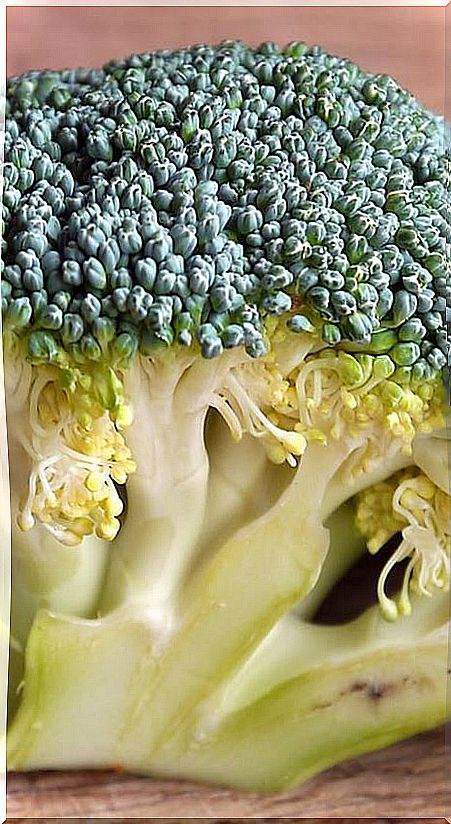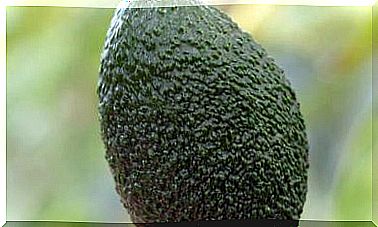The 4 Properties That Make Broccoli A Unique Food For The Brain
Broccoli is a nutritional treasure beneficial for the entire organism and especially for the brain, as it protects it against inflammation and oxidation and improves the connection between neurons.

- 1. Improves the connection between neurons
- 2. Protects the brain from oxidation
- 3. Kicks up the mitochondria
- 4. Reduces inflammation
- What is sulforaphane?
- What are the foods richest in sulforaphane?
Only good things are said about broccoli, and more good things can always be said about this food. If you cut a broccoli in half, what you see will surely remind you of a brain, and it turns out that the properties of the most peculiar compound in broccoli, sulforaphane, especially benefit our gray matter. It seems like a magic thing and maybe it is.
1. Improves the connection between neurons
Sulforaphane increases so-called “heat shock proteins” that improve communication between neurons across synapses.
This property of sulforaphane has led to its usefulness in the treatment of autism being investigated , since the behavior of people affected by this disease improves when these proteins are stimulated.
In fact, the four properties of sulforaphane that we explain in this article are indicated in the treatment of autism.
2. Protects the brain from oxidation
Oxidative stress caused by free radicals in all organs of the body, including the brain, causes inflammation, disease and degeneration.
The body has its own antioxidant resources, but food provides many compounds that help it fight radicals. Sulforaphane is one of them, but it is not one more, like vitamins C and E, minerals like selenium or plant compounds like beta-carotene. Sulforaphane is the natural molecule with the greatest capacity to increase the levels of Nrf2, a signal that triggers the antioxidant response in the body.
Nrf2 is considered “a master regulator” of the body’s response to environmental stressors. It increases the activity of all kinds of protective genes in cells, which deactivate free radicals and facilitate the repair of proteins and DNA.
3. Kicks up the mitochondria
Mitochondria are organelles in cells whose function is to produce energy from glucose, fatty acids or proteins. When you feel tired, one reason may be that your mitochondria are not working at their best.
Again, sulforaphane is able to increase the number and improve the functioning of the mitochondria, thereby balancing the metabolism.
This property is especially interesting for the brain, the organ that consumes the most energy.
4. Reduces inflammation
The neuroinflammation or inflammation of the brain is behind many degenerative disorders that can affect this organ. People with excess inflammation show high levels of a protein called NF-kappa-beta.
Of course, broccoli reduces the NF-kappa-beta protein and consequently inflammation, thanks to sulforaphane.
What is sulforaphane?
Sulforaphane is an isothiocyanate derived from glucoraphanin and is found in large quantities in the cruciferous family, especially broccoli.
Sulforaphane is activated when glucoraphanin comes into contact with myrosinase, a family of enzymes that play a role in the defense response of plants.
Its consumption is associated with a lower risk of myocardial infarction and cancer. In addition, its effects are being studied in neurodegenerative diseases, diabetes and atherosclerosis.
What are the foods richest in sulforaphane?
- Broccoli (and even more so, broccoli sprouts) is the most common source of sulforaphane, but it is found in other foods as well:
- Cauliflower
- Kale
- Brussels sprouts
- Cabbage, both purple and white
- Bok choy
- Watercress
- Arugula
The raw vegetables have the highest levels of sulforaphane: raw broccoli contains ten times more sulforaphane than cooked.
The most recommended way to cook broccoli is to steam and only for 1 to 3 minutes. If you heat broccoli above 140 ° C, you lose a lot of glucoraphanin, the precursor of sulforaphane.
For this reason, it is best to avoid boiling or heating cruciferous vegetables in the microwave. Instead, eat them raw or lightly steamed to maximize their sulforaphane content.
To enhance the formation of sulforaphane, broccoli can be seasoned with mustard, because it is very rich in myrosinase.
Scientific references:
- Dipak K Das et al. Potential health benefits of broccoli- a chemic-biological overview. Mini Reviews in Medicinal Chemistry.
- Alfonso Lampen et al. Health benefits and possible risks of broccoli – an overview. Food and Chemical Toxicology.
- Débora Villaño et al. Effects of long-term consumption of broccoli sprouts on inflammatory markers in overweight subjects. Clinical Nutrition.









